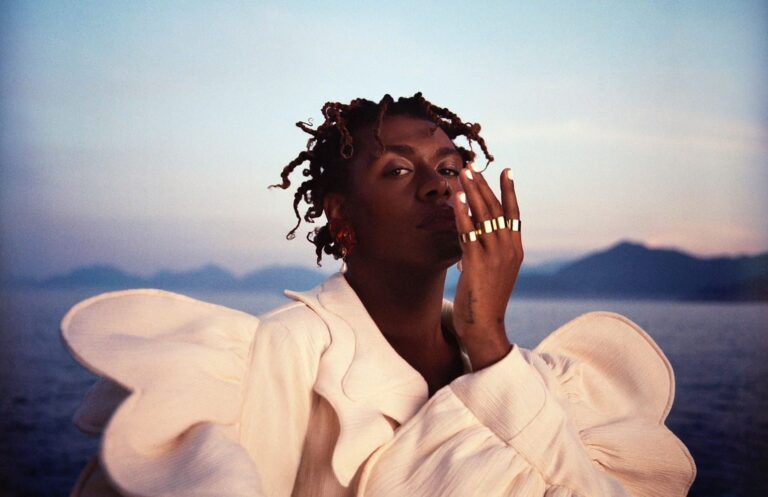Let’s embark on a new musical journey to Brazil, this time to that gigantic city that is São Paulo. And now we have a top-level guide, a special guest who knows the subject in depth: Pedro Kurtz from Deezer Brazil. At first, we gave a general approximation of what people actually listen to in Brazil. However, since the beginning of this year, we’ve become more specific with what happens locally in each region, starting with Rio de Janeiro.
Popular music in Brazil is expansive, even overwhelming. Many regions of the country give birth to new scenes, but there are two urban centers that concentrate the largest audiences and cause the greatest impact: São Paulo and Rio. “This is what we call the Rio-SP axis,” says Pedro Kurtz. “Historically, these two cities have been of great economic and touristic importance to the country – Rio once was the federal capital, São Paulo became heavily industrialized at a very fast pace – and therefore have taken the spotlights.”
“Currently, the music scenes in São Paulo are absurdly broad and diverse,” explains Pedro. “You can literally find anything in the city – from K-Pop to Armenian music to Cumbia, you name it. That is because São Paulo is home to not only a lot of Brazilians from all regions but also to a massively diverse population of immigrants from all over the world. That is also reflected in the variety of restaurants with unique cuisines you can find throughout the city. São Paulo is a fast-paced city and so are their inhabitants.”
What the locals listen to in São Paulo – as it happens in any other Brazilian city – also goes through that sieve called MPB. This label comes from a time when music began to be made for the masses instead of the elites. “That’s basically why it’s called ‘popular,’” adds Pedro, who describes what’s happening today as Post-MPB, quoting Rio de Janeiro-based indie artist Ana Frango Elétrico. “After all, music nowadays can enter many niches, and all music is potentially made for the masses due to global reach and streaming platforms.”
Did Brazilian Popular Music become more indie? Or is it just a side that has been attached to it over time? “There has always been an indie side to MPB, and there’s one for Post-MPB,” argues Pedro. “I’d dare to say that MPB is a music genre that usually defies the status quo. In the past, we had artists such as Caetano Veloso, Gilberto Gil, Rita Lee and many more that dared to challenge social stigma.” Nowadays, of course, he also recognizes incredible talents, starting with two artists: Liniker and Tim Bernardes.
Neither of these two artists needs much of an introduction at Tigre Sounds – we included both as part of the new outpost of Brazilian indie singer-songwriters. Liniker had already amazed us when she performed with her band at the time – Os Caramelows – at NPR Music’s Tiny Desk Concert. And last year she further confirmed expectations when she became the first transgender artist to win a Latin Grammy. Tim Bernardes is the latest Brazilian miracle of refined song, praised by all the legends of Tropicália – from Caetano Veloso and Tom Zé to Gal Costa and Maria Bethânia.
“There are many more relevant emerging artists in Post-MPB such as Rodrigo Alarcon, Tuyo, Mahmundi, and Os Garotin,” says Pedro, giving an example of how the Post-MPB covers all the regions of Brazil. Rodrigo Alarcón is from São Paulo, Mahmundi is from Rio, Tuyo is a trio from Curitiba, and Os Garotin is another trio originally from São Gonçalo. “I listen to lots of different of music and that great variety definitely influences me when I’m writing my own songs,” Rodrigo introduces himself in his bio for Deezer. “Since Brazilian music is very rich and diverse, there’s a lot to do in terms of research – I like experimenting with all those different genres that are comprised in our culture.”
Pedro Kurtz emphasizes this pan-regional vision of popular music in Brazil: “There’s no way to approach it if your eyes only look at São Paulo or Rio, because there’s much more.” Recife, Salvador, Belém, Belo Horizonte, Fortaleza, Goiânia, Porto Alegre and Curitiba stand as valuable and rich musical seedbeds. “The music scenes in these cities export artists and entire musical genres to São Paulo’s market and to the rest of the country,” he says. There are also migrant artists, such as Tagua Tagua, the São Paulo-based electronic and tropical psychedelia project of Porto Alegre-born Felipe Puperi.
However, when looking for an example of how streaming platforms changed the rules and helped spread the music of artists from different parts of the country, Kurtz chooses a rather more mainstream name: João Gomes, a successful forró singer-songwriter from Petrolina, Pernambuco. “He’s definitely my favorite story of a breakthrough artist,” says Pedro. “He had no presence whatsoever in DSPs until May 2021. His debut album, Eu Tenho a Senha, was the most listened album for more than 12 weeks and he quickly became a sensation throughout the whole 5 regions of Brazil.”
This unstoppable boom also opened up countless collaborations for João Gomes with artists from all over the country, including Brazilian funk artist MC Ryan SP from São Paulo. And since the spotlight returns to the big city, we must mention the relevance of the hip-hop scene in the São Paulo music circuit. Of course, there are established local rappers like Emicida and Criolo. But here Pedro Kurtz enlightens us with some emerging names to keep in mind, such as fellow citizens MC Caverinha and Yago Oproprio, but also MD Chefe and N.I.N.A from Rio de Janeiro.
Keep the party going with our Pã0 de Queijo playlist here:


